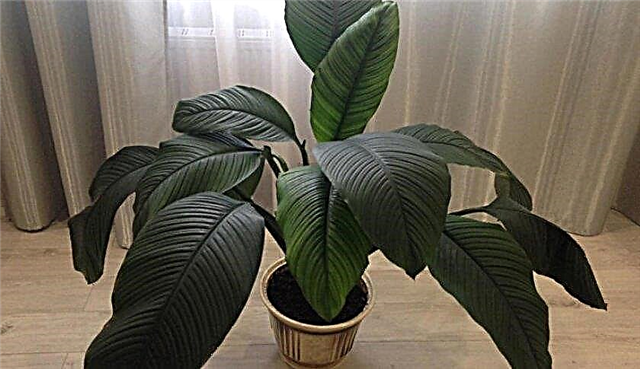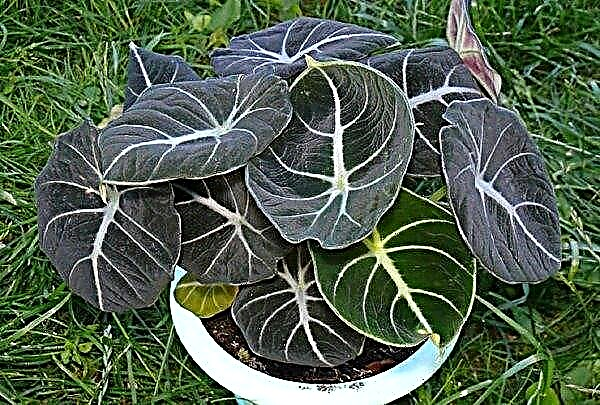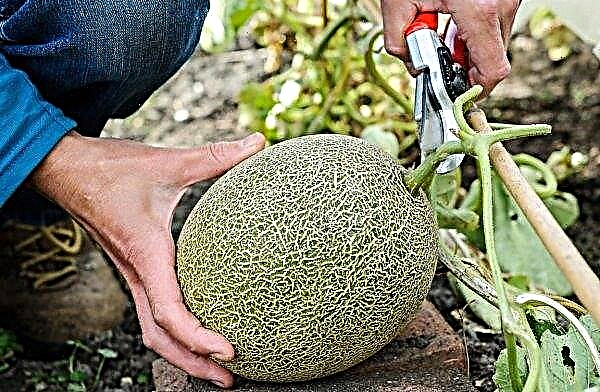Spathiphyllum refers to those indoor flowers that are in almost every house and whose name few people know. He is most often called "female happiness" because they believe in his ability to help single girls successfully marry. The plant can rightfully be called office plants, as it decorates many classrooms and offices with its noble appearance. We will find out what varieties of this beautiful flower exist and how to care for them.
General flower information
Spathiphyllum belongs to the evergreen perennials of the Aroid family. The flower was discovered in the XIX century in Colombia by the German scientist G. Wallis, after which it came to the countries of North America and Europe. The zone of natural distribution is the humid tropical forests of Central and South America, as well as the Philippines and other islands of the Old World. The name "spathiphyllum" is translated from Greek literally as "cover sheet."
This is because the flower has the shape of a yellow, cream or white cob, which on the one hand, as a bedspread, covers a single petal. It resembles a small sailing ship, the sail of which was inflated by the wind. A wide “sail” in the shape of an ellipse is painted in bright colors: white, cream or light green. By the time of ripening, the flower can completely turn green. A miniature “sailboat” is located at the end of a long peduncle that grows directly from the root and rises above the leaves.Did you know? Spathiphyllum is a very useful flower: it purifies the air in the room from harmful gases and germs, and also calms the nervous system of the inhabitants of the apartment.
Dense foliage does not grow on the stem, but on elongated petioles and forms a lush basal rosette. The shape of large leaves is lanceolate or oval. On each of them, the central vein and the thinner transversely stand out. The clarity of this pattern, the color (plain green or two-tone) and the size of the leaves varies depending on the variety. The root system is small, does not require a large pot. “Feminine happiness” blooms for quite some time: from spring to autumn, which depends on the variety.
Spathiphyllum: groups and varieties
In nature, there are more than 45 species of spathiphyllum. And only about 10 of them became indoor. The ancestors of most of the new varieties are two main species: plentifully flowering (Floribundum) and Wallis (Wallisii). All hybrids are very similar to each other. But still they differ from each other by the height of the bush, the shape and color of leaves and flowers. For flower growers, it is important to learn to distinguish between varieties of “female happiness”, since the conditions of their maintenance depend on this. All indoor spathiphyllums can be divided into groups:
All indoor spathiphyllums can be divided into groups:
- unusual
- rare;
- large;
- easy to care for;
- difficult to care for.
Fancy
This group can include many varieties and hybrids, which are distinguished from others by their unusualness: the color and shape of leaves or flowers.
Did you know? According to Sumerian mythology, when the goddess of love Ishtar (Greek Astarta) married, she gave the earthly girls a white flower so that he would help them find a happy family.
Rare
Rare species of spathiphyllum are difficult to find for various reasons. Therefore, they have a rather high price.
Large
This is a group of the largest varieties. They are grown in outdoor flowerpots and used in landscaping.
- Spoon-shaped - the largest view. The height of the bushes is from 1 to 1.5 m. Large glossy leaves of dark green color have the shape of an elongated ellipse (40 cm in length and 25 cm in width) with wavy edges. Petioles of leaves are very long, reach 70 cm. The snow-white bedspreads have a concave shape, which resembles a spoon. For the flower to reach its maximum size, it needs good lighting, moist air and warmth (not lower than + 15 ° C).

- Sensation - giant spathiphyllum. Everything is very large for him: the height of the bush is 1.5 m, the length and width of the leaves are 80 and 40 cm, respectively, the size of the white “sail” is 50 cm. Although the Sensations are impressive, she needs the same care as her other brothers smaller sizes.

Easy to care
This group includes not only old species, but also new very beautiful varieties. Their advantage is that they are very easy to care for. Even novice growers will cope with such colors.
Difficult to care for
This group includes capricious varieties of "female happiness." They need special conditions (humidity, lighting, etc.). Without proper care, such flowers lose their appearance and become ill.
Did you know? There are specimens with red and pink “sails”. In fact, red varieties of spathiphyllums have not yet been bred, the flowers are simply painted chemically. Or is it a related species - anthurium.
General rules for home care
All types and varieties of “female happiness” are grown in approximately the same conditions. The only difference is that some of them are more hardy and can easily withstand adverse circumstances. Others are very sensitive and painfully react if their content does not meet the requirements. Therefore, if the apartment does not have the opportunity to create ideal conditions for these plants, then it is better to buy one of the unpretentious varieties.
Important! Liquid fertilizers can be applied only after abundant watering, so as not to burn the roots.
Suitable conditions for spathiphyllum:
- lighting: a lot of light, but without direct sunlight;
- temperature: not lower than + 18 ° С, optimally + 22 ... + 25 ° С, avoid sharp temperature drops;
- air humidity: high 60–80%, spraying is necessary, especially in summer;
- watering: as necessary, so that the ground is constantly slightly moist, dryness and stagnation of water in the pot and pan should be avoided;
- the soil: light and loose; baking powder (charcoal, vermiculite, sphagnum) must be added to the purchased universal mixture; a home-made substrate is prepared from sand, peat, leaf and turf soil (1: 1: 1: 2) with the addition of the same baking powder;
- top dressing: liquid mineral fertilizers for decorative and deciduous flowers (regularly) and organic (from time to time), during flowering - every 2 weeks, during the rest - once a month;
- transfer: 2 weeks after purchase, young flowers (up to 5 years) are transplanted annually, and adult bushes - when the roots are completely braided by an earthen lump.

Pest and Disease Control
A common cause of damage to spathiphyllum by diseases and pests is the failure to follow the rules for caring for it.
Pests:
- spider mite heats the leaves with cobwebs, after which they dry out; methods of control: rinse the cobwebs with water, then treat with soapy water, and if necessary with insecticides;
- mealybug also damages leaves; the cause of the appearance is excessive humidity; ways to control: wash off insects from the leaves with an alcohol solution, if necessary, treat the foliage with an infusion of orange peels or insecticides;
- scale shield: dark spots appear on leaves and petioles; methods of control: processing the green part of the plant with a soap-tobacco solution with the addition of kerosene or an aqueous solution of nicotine sulfate (1 g / 1 l).
Disease
- root rotat which the flower turns pale and wilts; the reason is excessive watering and dense land; method of treatment: transplantation with the removal of the affected roots and their treatment with glyocladine;
- phytosporosis - a fungal disease in which the roots become soft and gradually die; treatment: stop watering until the earth dries out;
- gummosis - a bacterial infection, due to which the leaves fade and blacken around the edges; treatment: remove diseased leaves, then wash the plant with soap and warm water.
 Spathiphyllum, or “feminine happiness”, is an elegant and very decorative plant that abounds in different varieties. Choose the one that suits you best and try to follow the listed care tips.
Spathiphyllum, or “feminine happiness”, is an elegant and very decorative plant that abounds in different varieties. Choose the one that suits you best and try to follow the listed care tips.














